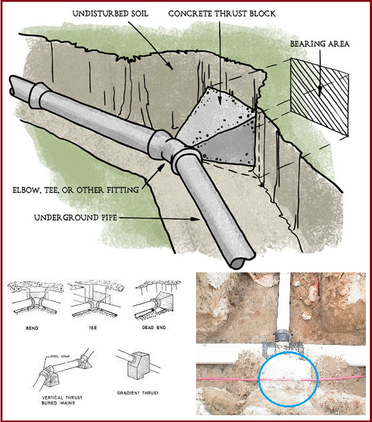A36 steel is a low carbon steel that is commonly used in construction and other heavy industries. It is made up of iron and carbon, with the carbon content typically ranging from 0.25% to 0.29% by weight. This steel has a yield strength of 36,000 psi and an ultimate tensile strength of 58,000-80,000 psi. It is also characterized by its ability to be easily welded, cut, and machined. Due to its low cost and strength, A36 steel is a popular choice for a wide range of applications, including construction of bridges, buildings, and other structures.
A36 steel is also known for its ductility, or ability to bend without breaking, which makes it ideal for construction projects that require a high degree of flexibility. Additionally, A36 steel is a low-alloy steel, which means that it contains small amounts of other elements such as manganese, sulfur, phosphorus, and silicon. This gives the steel additional strength and corrosion resistance, making it suitable for use in harsh environments.
A36 steel can be heat-treated to improve its hardness and strength, and is often used in the quenched and tempered condition. It is also commonly used in the normalized condition, where the steel is heated to a specific temperature and then cooled at a controlled rate.
This particular steel is also commonly used in the shipbuilding, offshore and marine industry. Due to its low carbon content, it is easy to be welded. Also, it is known for its excellent toughness and good fatigue resistance.

In summary, This one particular steel is a versatile and widely-used material that is known for its strength, ductility, and corrosion resistance. It can be used in a wide range of applications, including construction, shipbuilding and offshore industry, making it a popular choice among engineers and builders.
Working of A36 Steel
When working with this particular steel, it is important to keep in mind that it has a lower yield strength and ultimate tensile strength compared to other types of carbon steel. This means that it may not be suitable for applications that require high levels of strength and durability.
When machining this steel, it is recommended to use sharp tools and high speeds to prevent the buildup of heat, which can cause the steel to warp or deform. The steel can also be easily welded, but care must be taken to ensure proper preheat and post-weld heat treatment to avoid cracking.
This particular steel can also be bent, formed, and cut into various shapes and sizes, but it should be done carefully and with the right equipment to avoid cracking or breaking. It can also be painted or coated for added corrosion resistance, but the surface should be cleaned thoroughly before applying the coating to ensure proper adhesion.
When designing structures or other items that will be made with this steel, it is important to consider the steel’s properties and how they will affect the final product. This includes its strength, ductility, and corrosion resistance. It’s also important to consider the environment in which the structure will be placed and ensure that the steel is suitable for that specific environment.
In general, This steel is a cost-effective and versatile material that can be used in a wide range of applications. However, it is important to consider its properties and limitations, and to work with it carefully to ensure the best results.
Properties of A36 Steel
A36 steel is a type of low carbon steel that is commonly used in construction and other heavy industries. It is known for its excellent combination of strength, ductility, and corrosion resistance. Some of the key properties of A36 steel include:
- Strength: This steel has a yield strength of 36,000 psi and an ultimate tensile strength of 58,000-80,000 psi. This makes it suitable for use in construction projects that require a high degree of strength and durability.
- Ductility: This steel has a high degree of ductility, which means that it can bend without breaking. This property makes it ideal for use in construction projects that require a high degree of flexibility.
- Corrosion resistance: This steel has low levels of alloying elements such as manganese, sulfur, phosphorus, and silicon. This gives it additional corrosion resistance, making it suitable for use in harsh environments.
- Weldability: This steel is easy to weld and can be welded using various methods, including gas, arc, and resistance welding.
- Machinability: This steel is easy to machine and can be machined using various tools and techniques.
- Toughness: The A36 steel is known for its excellent toughness and good fatigue resistance.
- Hardness: This steel can be heat-treated to improve its hardness and strength, and is often used in the quenched and tempered condition.
- Formability: This steel can be bent, formed, and cut into various shapes and sizes, but it should be done carefully and with the right equipment to avoid cracking or breaking.
- Printability: This steel can be painted or coated for added corrosion resistance, but the surface should be cleaned thoroughly before applying the coating to ensure proper adhesion.
- Cost-effectiveness: This steel is a cost-effective material that is widely available and easy to work with, making it a popular choice among engineers and builders.

It’s important to keep in mind that while this steel has many desirable properties, it may not be suitable for all applications. It’s important to consider its properties and limitations, and to work with it carefully to ensure the best results.
Usage of A36 Steel
A36 steel is a low-carbon steel that is commonly used in construction and other heavy industries. It is known for its excellent combination of strength, ductility, and corrosion resistance, which makes it suitable for a wide range of applications. Some common uses of A36 steel include:
- Construction: A36 steel is often used in the construction of buildings, bridges, and other structures because of its high strength and ductility. It is also a popular choice for use in the construction of roads and other infrastructure projects.
- Shipbuilding: A36 steel is also commonly used in the shipbuilding and marine industry due to its low carbon content, good toughness and fatigue resistance.
- Offshore structures: A36 steel is used in the construction of offshore structures such as platforms and drilling rigs, because of its ability to withstand harsh marine environments.
- Heavy equipment: A36 steel is often used in the manufacturing of heavy equipment such as excavators, loaders, and bulldozers because of its strength and durability.
- Pressure vessels: A36 steel is also used in the construction of pressure vessels, such as tanks and boilers, because of its excellent strength and ductility.
- Industrial fabrication: A36 steel is widely used in industrial fabrication, such as in the construction of storage tanks and machinery.
- Automotive: A36 steel is used in the automotive industry for manufacturing of different parts like crankshaft, suspension, and transmission components.
- Storage tanks: A36 steel is also used in the construction of storage tanks and containers, because of its corrosion resistance and ability to withstand pressure.
- Mining equipment: A36 steel is used in the manufacturing of mining equipment such as conveyors and chutes, because of its strength and durability.
- General fabrication: A36 steel is also used in general fabrication work, such as in the construction of metal buildings and other structures.
It’s worth noting that, A36 steel is a versatile material and can be used in a wide range of applications. However, it may not be suitable for all applications and it’s important to consider its properties and limitations and choose the right grade of steel for specific application.
Applications of A36 Steel Material
A36 steel is a low-carbon steel that is commonly used in construction and other heavy industries. It is known for its excellent combination of strength, ductility, and corrosion resistance, which makes it suitable for a wide range of applications. Some specific applications of A36 steel include:

- Building construction: A36 steel is widely used in the construction of buildings, bridges, and other structures because of its high strength and ductility. It is used for the construction of structural steel components such as beams, columns, and girders.
- Road and infrastructure construction: A36 steel is also commonly used in the construction of roads, bridges, and other infrastructure projects because of its high strength and durability.
- Shipbuilding: A36 steel is widely used in the shipbuilding industry for the construction of ships and other marine vessels because of its low carbon content, good toughness and fatigue resistance.
- Offshore structures: A36 steel is used in the construction of offshore structures such as platforms and drilling rigs, because of its ability to withstand harsh marine environments.
- Heavy equipment: A36 steel is often used in the manufacturing of heavy equipment such as excavators, loaders, and bulldozers because of its strength and durability.
- Pressure vessels: A36 steel is also used in the construction of pressure vessels, such as tanks and boilers, because of its excellent strength and ductility.
- Industrial fabrication: A36 steel is widely used in industrial fabrication, such as in the construction of storage tanks and machinery.
- Automotive: A36 steel is used in the automotive industry for manufacturing of different parts like crankshaft, suspension, and transmission components.
- Mining equipment: A36 steel is used in the manufacturing of mining equipment such as conveyors and chutes, because of its strength and durability.
- General fabrication: A36 steel is also used in general fabrication work, such as in the construction of metal buildings and other structures.
- Pipes and tubes: A36 steel can be used in the manufacturing of pipes and tubes, particularly in the oil and gas industry due to its corrosion resistance and ability to withstand pressure.
- Building reinforcements: A36 steel is used in building reinforcements, such as in the construction of reinforced concrete structures.
Overall, A36 steel has a wide range of applications in the construction and manufacturing industry. It is a cost-effective and versatile material that is known for its strength, ductility, and corrosion resistance.




